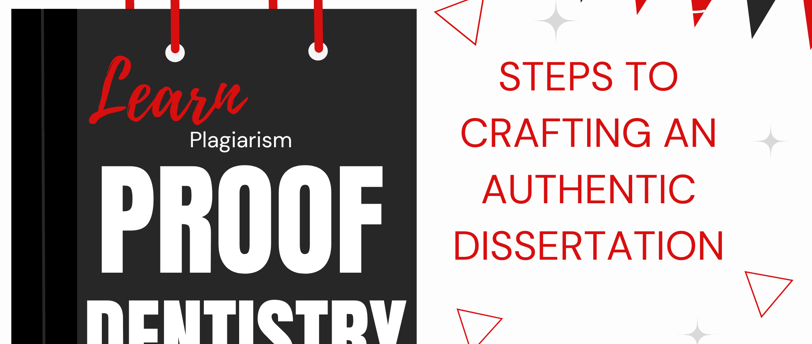Updent Publication: Where Knowledge Meets Innovation.
Plagiarism-Proof Dentistry: Steps to Crafting an Authentic Dissertation.
Writing a dissertation without the fear of copyright issues and plagiarism requires careful planning, originality, and adherence to academic integrity. Here’s a step-by-step guide for dental postgraduate students.
#DENTAL LIBRARY DISSERTATIONS
Updent Publication
3/14/20251 min read


Writing a dissertation without the fear of copyright issues and plagiarism requires careful planning, originality, and adherence to academic integrity. Here’s a step-by-step guide for dental postgraduate students:
1. Understand Copyright and Plagiarism
- Familiarize yourself with what constitutes plagiarism, including direct copying, improper paraphrasing, and self-plagiarism.
- Know your institution’s guidelines on using copyrighted materials and citing sources.
2. Plan Your Research Thoroughly
- Select a unique and specific topic within your field of dentistry to reduce overlap with existing work.
- Conduct thorough literature reviews and identify gaps in existing research where you can contribute original ideas.
3. Take Detailed Notes with Sources
- Keep clear records of all the sources you consult, including page numbers, URLs, and publication details.
- Use citation management tools like Zotero, Mendeley, or EndNote to organize your references effectively.
4. Write in Your Own Words
- Summarize and explain concepts in your unique style instead of copying text verbatim.
- Use quotations sparingly and always enclose them in quotation marks with proper attribution.
5. Cite Sources Properly
- Follow the required referencing style (e.g., APA, MLA, Vancouver) meticulously for every piece of borrowed information.
- Include in-text citations and a comprehensive bibliography or reference list.
6. Seek Permission for Copyrighted Material
- If using images, charts, or tables from other publications, request permission from the copyright holder and provide proper credits.
- Alternatively, consider creating your own diagrams and visuals.
7. Use Plagiarism Detection Software
- Before submission, run your dissertation through plagiarism checkers such as Turnitin or Grammarly to ensure originality.
- Address any flagged sections to align with plagiarism-free standards.
8. Consult Supervisors and Mentors
- Share your drafts with your academic advisor for feedback on originality and proper citation practices.
- They can guide you on striking the right balance between referencing existing work and contributing new ideas.
9. Be Confident in Your Work
- Focus on adding your insights, findings, and interpretations to existing knowledge.
- A well-researched and original dissertation speaks volumes about your dedication and skills.
By following these steps, you can create a dissertation that adheres to ethical academic practices and reflects your hard work and creativity.
